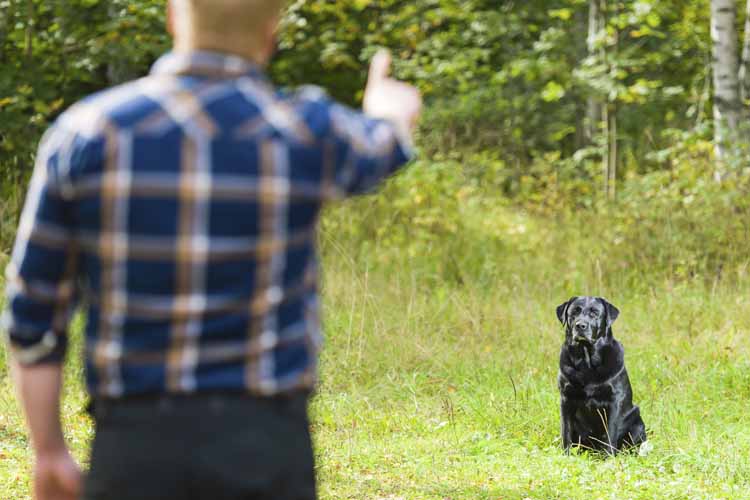Get Your Dog to Respond to Cues
By Cara Lederman, ABCDT, APDT
Does your dog instantly sit when asked from a foot away, but cocks her head or walks away when you’re across the room? This dog training tip will help you teach your dog to respond to cues when they’re needed most.
Use Hand Signals
The first step is to incorporate hand signals with your verbal cues. Dogs respond better to visual cues, especially at a distance. Your hand signals should be clear and distinct. For “sit,” a closed fist moving upward works well. To communicate “down,” try an open hand moving downward. Use both arms with open hands moving toward your chest to instruct your dog to “come.”
If you’re unsure of which hand signals to use with other verbal cues, contact your local dog trainer. Make sure your dog successfully performs the requested cues nine out of 10 times when you’re standing directly in front of her.
Stand in Different Positions
Dogs always watch their owner’s body language whether you’re conscious of it or not. Usually, people give their dogs commands when standing directly in front of them. Once your dog has mastered cues this way, try standing next to your dog, facing the same direction as her and give her commands.
The best cue to master first in this position is “focus.” Progress to standing in front of your dog sideways and then eventually have your back to your dog while you give her commands. Make sure your verbal cues are clear since your visual cues won’t be useful with your back facing her. A note about verbal cues: avoid repeating a cue more than once. If your dog doesn’t respond, say “no” or “eh-eh” and make the exercise easier for your dog to succeed.
Increase Your Distance
Once your dog is responding to your cues without you directly facing her, it’s time to add some distance. Start at a short distance, eventually building on it while remembering to give clear verbal cues and hand signals. Have a friend help you by being the treat dispenser. If you’re standing 20 feet away and your dog is successful, you should treat her right away.
This is especially helpful when you practice “leave it.” Instruct your dog to “leave it” and then toss a treat or toy near her. Your friend will need to block your dog if she tries to go for it.
By practicing and being consistent with these training exercises, your dog will understand and respond to cues in more situations. This is beneficial for safety reasons and also helps to strengthen the bond with your dog. Remember to be patient and loving with your dog, especially when teaching her new things. If you make the training positive and fun, your dog is much more likely to succeed.
Happy training!





